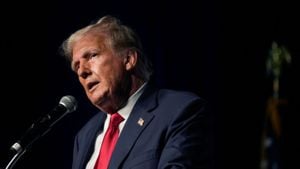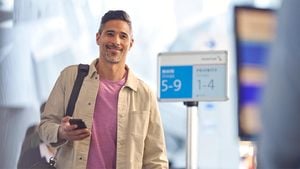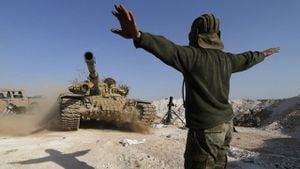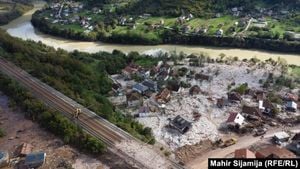Navigational issues and technical malfunctions have thrust NASA’s current mission involving astronauts Butch Wilmore and Suni Williams onto the back burner. Originally slated to return after just one week aboard the International Space Station (ISS), their mission has now stretched indefinitely due to hiccups with Boeing's Starliner capsule.
The Starliner has been hit with propulsion failures and helium leak problems, causing NASA to rethink the safety of the astronauts' return. Plans are now swirling around the idea of having Wilmore and Williams hitching a ride back on the next SpaceX launch, extending their stay on the ISS until February of next year.
Life aboard the ISS has gotten increasingly cramped and uncomfortable, as the duo is now cohabiting with nine others instead of the regular six or seven. The small sleeping spaces have forced them to adapt; for example, Wilmore has taken to sleeping in a bag inside Japan’s Kibo module.
This longer-than-expected mission hasn’t come without its complications, especially when it came to clothing. Thankfully, the recent arrival of a resupply vehicle has helped alleviate some of the pressure by dropping off fresh garments.
Despite the discomforts, both astronauts are attempting to stay upbeat about their situation. Williams expressed this positivity, declaring, "We're very happy here on the ISS," even amid the uncertainty surrounding their eventual return.
NASA plans to pore over additional data before deciding the fate of the Starliner, with critical thrusters necessary for its de-orbit maneuvers playing a significant role. This careful analysis highlights the agency's commitment to astronaut safety, something emphasized by Ken Bowersox, NASA's space operations mission chief.
Bowersax noted, "We have time on our hands before we can bring Starliner home, and we want to use it wisely." The current scenario has echoed reminders of past NASA tragedies, where rushed decisions led to disastrous outcomes.
Russ DeLoach, NASA's security chief, pointed out the need for balanced deliberation, leading to slower navigational decisions. "We don’t have enough knowledge and data to make any kind of simple calculations," he said, underscoring the complexity of the situation.
The transition from Boeing’s Starliner to SpaceX may require some shuffling of the current crew. The upcoming shuttle flight, slated for late September, will involve adjustments to make room for Wilmore and Williams.
This leaves the ISS with limited docking spots, as NASA has only two positions available for American capsules. Consequently, the Starliner will need to make its exit before SpaceX’s Dragon capsule can make its scheduled arrival.
While Boeing remains adamant about the safety of its Starliner, acknowledging successful tests prior to the current circumstances, NASA has no plans to be complacent. The existing SpaceX crew will stay put until replacements are arranged, barring emergencies.
Wilmore and Williams, both seasoned Navy captains with extensive space experience, have jumped straight back to work on the ISS. They continue to assist with various experiments and perform necessary repairs, demonstrating their adaptability and expertise as astronauts.
"That's your job as astronauts," explained Joe Hayes, NASA’s chief astronaut, adding pressure on the duo who are now tackling tasks and tests as part of this current mission. This mission is classified as a test flight, letting them know to expect hurdles along the way.
NASA enlisted both Boeing and SpaceX to ferry astronauts to the ISS after retiring its shuttle program back in 2011. While SpaceX successfully launched its first crewed flight in 2020, Boeing has faced delays and complications, resulting in over $1 billion spent sorting through issues post their initial uncrewed test flight.



